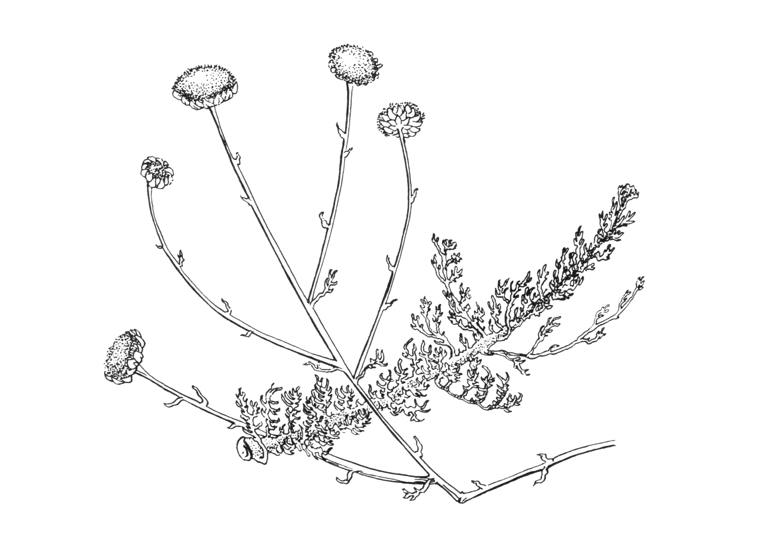An evergreen bush 11⁄2 to 2 ft high; stems glabrous, green. Leaves deep green, glabrous, the largest 1 to 2 in. long, about 1⁄8 in. wide, very similar in structure to those of the preceding species but with the teeth or projections more distant, forward-pointing or sometimes wanting. Flower-heads bright yellow, 3⁄4 in. across, produced in July singly at the end of slender, erect, glabrous stalks 6 to 10 in. long.
Native of southern France, Spain and Portugal; in cultivation 1727. An attractive species, with foliage of a rich deep green. The plant is not quite as dense in growth, nor quite so hardy, as S. chamaecyparissus. The leaves emit an odour when rubbed, but it is neither so strong nor so pleasant as that of the latter species.
cv. ‘Primrose Gem’ – Flowers pale primrose-yellow.
subsp. canescens (Lag.) Nyman S. canescens Lag.; S. pectinata Lag., not Benth. – Like the typical subspecies, but stems finely downy and the leaves pinnate, with linear, more crowded, laterally spreading lobes. Native of southern Spain.


